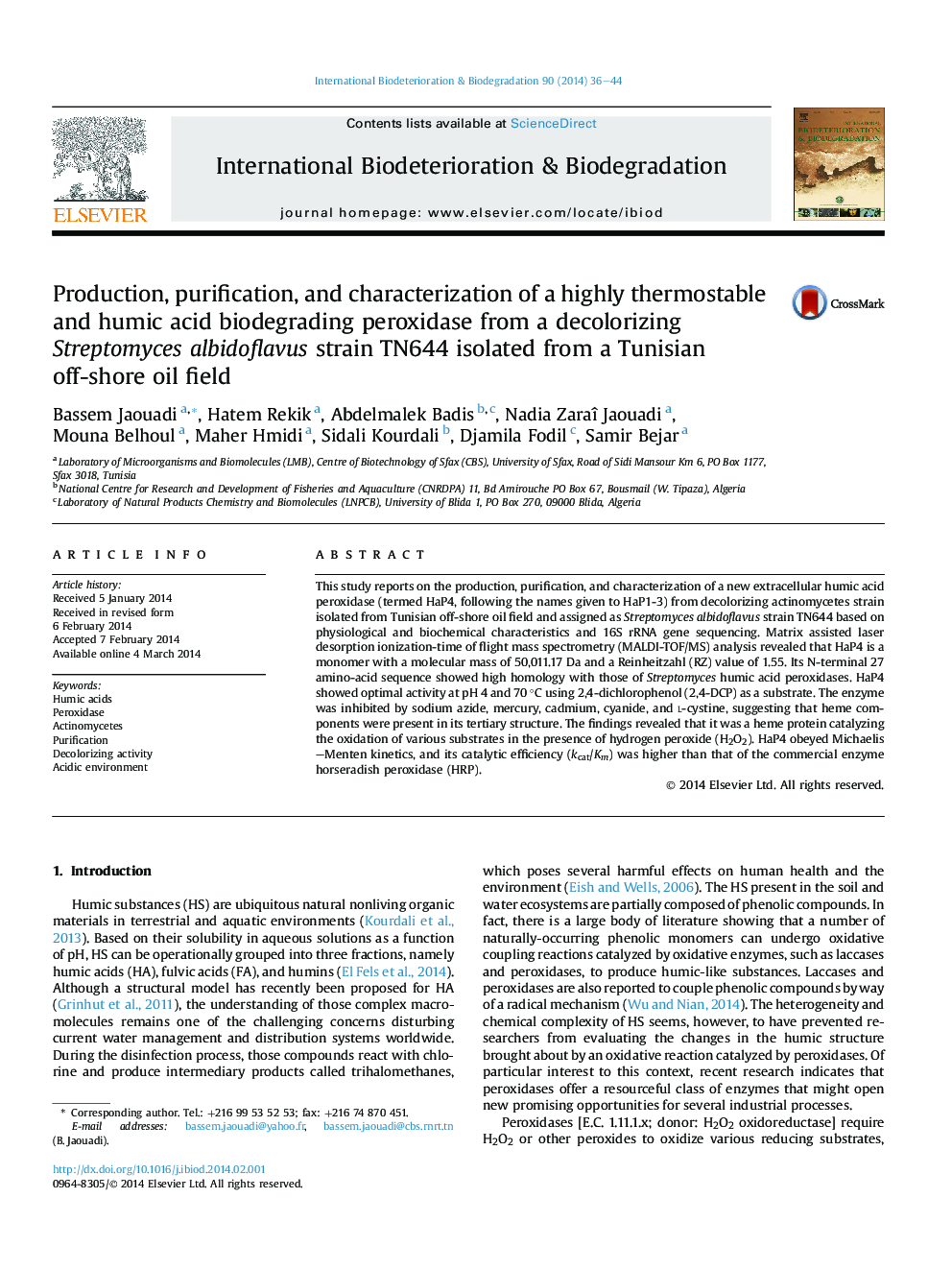| Article ID | Journal | Published Year | Pages | File Type |
|---|---|---|---|---|
| 4364783 | International Biodeterioration & Biodegradation | 2014 | 9 Pages |
•A novel Streptomyces albidoflavus humic acid peroxidase was purified (HaP4) and characterized.•HaP4 was a heme protein and a monomer with a molecular mass of 50,011.17-Da.•The optimum pH and temperature values for activity were pH 4 and 70 °C, respectively.•This enzyme was completely inhibited by sodium azide, mercury, cadmium and l-cyanide.•HaP4 is a strong candidate for application in the biodegradation of humic acids.
This study reports on the production, purification, and characterization of a new extracellular humic acid peroxidase (termed HaP4, following the names given to HaP1-3) from decolorizing actinomycetes strain isolated from Tunisian off-shore oil field and assigned as Streptomyces albidoflavus strain TN644 based on physiological and biochemical characteristics and 16S rRNA gene sequencing. Matrix assisted laser desorption ionization-time of flight mass spectrometry (MALDI-TOF/MS) analysis revealed that HaP4 is a monomer with a molecular mass of 50,011.17 Da and a Reinheitzahl (RZ) value of 1.55. Its N-terminal 27 amino-acid sequence showed high homology with those of Streptomyces humic acid peroxidases. HaP4 showed optimal activity at pH 4 and 70 °C using 2,4-dichlorophenol (2,4-DCP) as a substrate. The enzyme was inhibited by sodium azide, mercury, cadmium, cyanide, and l-cystine, suggesting that heme components were present in its tertiary structure. The findings revealed that it was a heme protein catalyzing the oxidation of various substrates in the presence of hydrogen peroxide (H2O2). HaP4 obeyed Michaelis–Menten kinetics, and its catalytic efficiency (kcat/Km) was higher than that of the commercial enzyme horseradish peroxidase (HRP).
